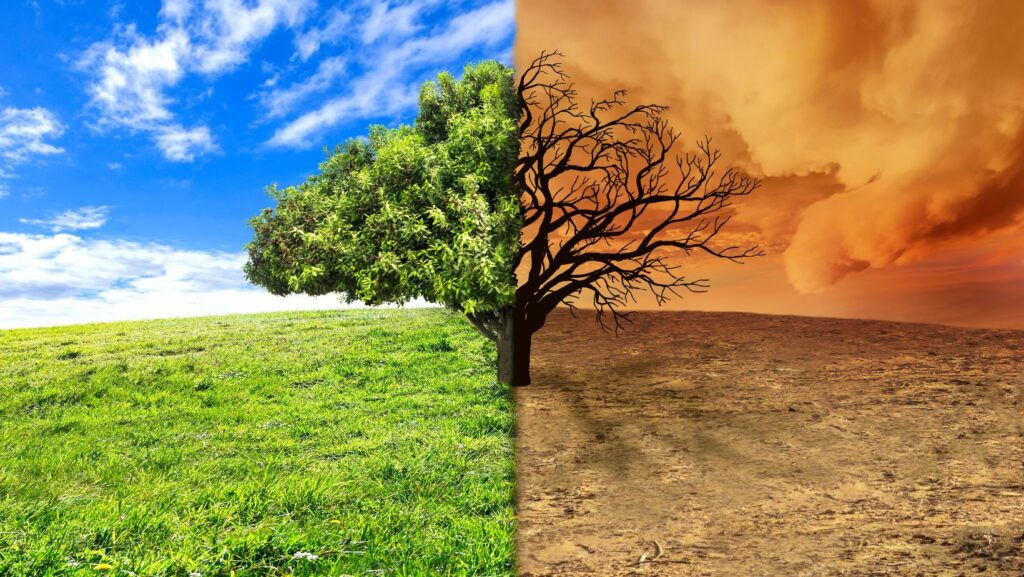The phrase climate refugees often brings to mind faraway regions where rising seas or droughts push families from their homes. Yet growing evidence shows that the United States is not immune to changes in the global economy and climate. Increasing storms, wildfires, and floods already drive thousands to leave their communities each year. As these pressures rise, the question becomes whether Americans will look north for stability and whether Canada could emerge as the next safe zone.
Why Americans May Be Forced to Relocate
Climate stress is not a distant threat. Coastal erosion eats into neighbourhoods in Florida and Louisiana. Severe wildfires devastate California towns and turn skies orange across states. Rivers in the Midwest spill into farmland with greater frequency. The cost of rebuilding rises while insurance companies withdraw coverage. As homes become unlivable and communities face repeated disasters, many people weigh relocation as the only option.
Scientific projections suggest tens of millions could be displaced by 2050. Some will resettle in other U.S. regions, but many may decide that another country offers a better chance at security. Canada stands out due to its size, climate, and proximity. This makes the idea of moving north more than speculation. It is a plausible plan for households searching for safety.
Why Canada Looks Attractive
Canada offers vast land, plentiful fresh water, and relatively stable weather patterns. While not free from fires, floods, or heat, many regions face lower levels of risk compared to U.S. hotspots. Political stability and social programs add another layer of appeal. Combined with its strong economy and immigration systems, these factors create an image of Canada as a potential refuge.
Another advantage lies in geography. Americans share a border with Canada that stretches thousands of miles. Proximity lowers relocation barriers compared to moving overseas. Families can cross by land or air and remain within a culture that feels familiar, even while differences exist. This ease of movement makes Canada a logical choice for those displaced by worsening conditions.
Provinces That Draw American Expats
If climate refugees move north, certain provinces will attract more attention. Large urban centers such as Toronto and Vancouver already host strong expat communities. They offer employment opportunities, cultural diversity, and established infrastructure. Housing costs are high, yet demand remains strong due to the sense of stability these cities provide.
Specifically, British Columbia is one of them and is likely to remain attractive to expats. Its coastal climate, natural beauty, and links to international trade make it a magnet for newcomers. Despite wildfire risks, many view it as a balanced place to settle. Ontario follows closely, home to Canada’s largest city and a central hub for finance, tech, and education. Atlantic provinces, with smaller populations and more affordable homes, also appeal to families seeking quieter lives.
The Prairie provinces could draw interest due to open space and agricultural potential. Quebec might attract those comfortable with bilingual life. Each province has strengths and limits, but together they form a map of possible destinations for displaced Americans.
Barriers That Cannot Be Ignored
Immigration law sets clear conditions for entry. While Americans enjoy easier access than many others, permanent residency requires work permits, sponsorships, or investment. Canada manages immigration carefully to maximize opportunities, balancing humanitarian needs with economic priorities. This means a sudden wave of arrivals could create legal hurdles for those hoping to move quickly.
Housing presents another challenge. Canadian cities already face shortages and affordability issues. Adding large numbers of new residents would strain supply further. Healthcare systems, while comprehensive, could face pressure as populations rise. Cultural integration also matters. Canadians value inclusivity, but rapid demographic shifts may test social cohesion.
The Economic and Social Impact on Canada
An influx of displaced Americans could reshape Canada’s economy and society. On one hand, new residents would bring skills, investment, and labour. Businesses could benefit from expanded markets. Universities could draw students who might otherwise remain in the United States.
On the other hand, strains on housing, transport, and infrastructure could deepen — especially if other refugees from countries with worse economies arrive as well. Regional inequalities might widen if some provinces absorb more newcomers than others. Environmental impacts must also be considered. An increased population could place pressure on forests, water systems, and farmland. Canada must balance opportunity with caution to avoid creating new vulnerabilities.
Climate Risks Within Canada
Canada is not a perfectly safe zone. Wildfires have swept through British Columbia and Alberta in recent years. Flooding threatens low-lying regions, while Arctic areas face rapid warming. Winters grow less predictable, with storms and heatwaves hitting unexpectedly. These realities show that while Canada offers relative safety, it is not immune to climate stress.

Planning for internal resilience is critical. Building stronger infrastructure, diversifying energy sources, and preparing health systems for extreme weather will help Canada manage future risks. This preparation will also decide how well the country can support an influx of newcomers without weakening its own stability.
Possible Scenarios Going Forward
In the best case, Canada updates immigration rules, invests in housing, and strengthens infrastructure. This creates space for displaced Americans to settle while supporting local populations. Cooperation with the United States could ease pressures, with agreements that manage cross-border flows fairly.
In the worst case, Canada faces sudden arrivals without preparation. Housing shortages intensify, healthcare systems become overloaded, and public sentiment turns negative. Social tension could grow, weakening the sense of security that drew people north in the first place.
The reality will likely fall between these extremes. Both countries must plan ahead. For the U.S., reducing displacement through stronger adaptation measures is key. For Canada, readiness to manage incoming populations while protecting its own communities will shape its future.
What The Future Holds
The idea of Canada as a safe zone is no longer hypothetical. As disasters increase in the United States, more people will consider moving north in search of stability. Climate refugees may soon become part of the cross-border story between these two nations. Canada has the resources and systems to offer refuge, but it must also prepare for the pressures that such a shift will bring. Whether it becomes a haven or a stressed neighbour depends on the choices made today.

